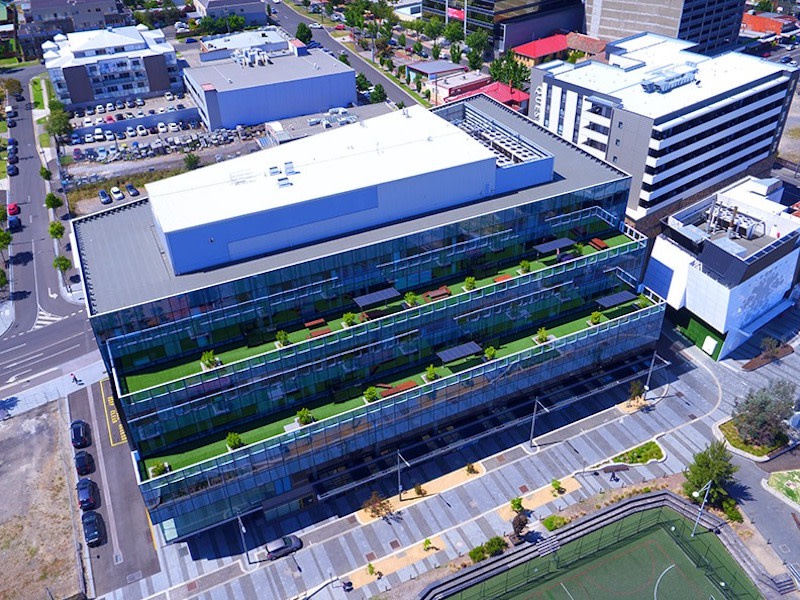Dandenong’s Little India Revamp Clears Hurdle

A revamped Little India at Dandenong in Melbourne’s south-east is a step closer after the state approved a strategy to develop the precinct.
The project’s development plan must now be finalised and approved before works can begin.
The new Little India is part of a $600-million, 20-year scheme for Sites 11-15 of the Revitalising Central Dandenong (RCD) masterplan, which was launched in 2007 and boosted by a $290-million Victorian Government commitment.
It proposes the 2ha site will feature not only a revitalised Little India precinct but also 470 new homes, 2500sq m of community space, and new commercial and retail spaces, including a supermarket and food market hall.
According to Development Victoria, the redevelopment will be carried out over seven stages and 20 years, and will generate 2600 construction jobs.
An expression-of-interest process to redevelop the sites was launched in 2019 and awarded to Melbourne-based developer and investments company Capital Alliance.
Capital Alliance submitted its masterplan to the state in January, 2023, after the opening of the draft plans to community consultation in March, 2022.
Dandenong: Past, present and future
A revamp is far from a new idea for Little India—a plan to create a museum was forumulated in 2009 by VicUrban.
And the current precinct is thriving, with the Greater Dandenong City Council describing it as “Melbourne’s longest-standing and most authentic cluster of Indian and subcontinental culture and commerce”.
The 2021 Census reveals 12,000 people in the city were born in India and another 19 per cent have at least one parent born there.
The council said the precinct was home to 33 Indian businesses, including restaurants and cafes, grocers, and retail and fashion outlets, and there were another 62 Indian shops at central Dandenong.
Yet despite the success of Little India, Dandenong struggled in the 1990s and early 2000s due to competition from neighbouring areas, according to Development Victoria.
As a result, investment in retail, entertainment and amenities infrastructure declined and criminal offences rose—and continue to do so in 2024.

In January this year, one media outlet noted that Greater Dandenong’s crime rate was the fifth highest in Victoria with offences rising 17.5 per cent in the area.
Thus, the RCD was needed to “transform central Dandenong into a vibrant and thriving economic hub”.
Yet, although several key projects have been completed, the initiative has also struggled.
Successful projects include the construction of a new Australian Tax Office building and a government services hub plus a multi-sports court and a municipal building with a library and civic plaza, Harmony Square.
Lonsdale Street, Dandenong’s main road, has been transformed into a “pedestrian-friendly boulevard” and a $25-million Quest building with commercial and retail space was opened in 2016.
And, after first being established in Dandenong 140 years ago, the Salvation Army opened a purpose-built, one-stop-shop community hub in February of last year.
But these successes have walked side-by-side with ongoing government stalls.
Negative audit for second-biggest city
When the-then premier Stephen Bracks launched the RCD in 2007, he proclaimed it would transform Dandenong into “Melbourne’s second-biggest city and cement it as one of the most liveable areas of Melbourne”.
But a Victorian auditor-general (VAGO) audit released in May, 2011 was unimpressed by the effectiveness of the RCD or its support and management arrangements.

The audit followed a 2008 Department of Treasury and Finance review recommending that a benefits management plan be developed for RCD—which the auditor-general noted had not occurred.
The audit found that while the Department of Planning and Community Development had made “notable progress” on the masterplan since 2005, this progress “occurred in the absence of sufficiently clear, agreed and monitored performance standards”.
“Most seed projects have experienced long delays, due mainly to inadequate cross-government co-ordination and support,” the auditor-general said.
“Cross-government collaboration … is not systematic or structured … and there is little assurance it is always effective.”
In late 2022, a media report said that the RCD’s original goal of creating 5000 jobs, 4000 homes (later changed to up to 40,000) and more than $1 billion in private investment within 15 to 20 years had not happened.
The City of Greater Dandenong believes fewer than 2000 jobs and 1000 new homes have been generated and just $700 million in private investment achieved.
But while what the future holds for Little India, Dandenong and the RCD is far from clear, the commitment to move ahead seems strong, bringing hope of improvement—and opportunity—to the city.














